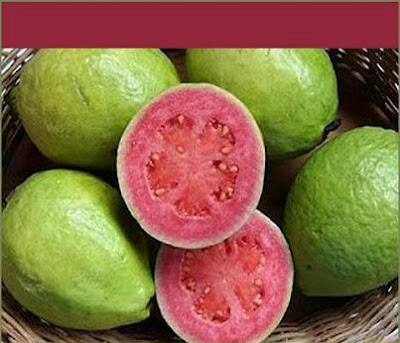NEW DELHI: This winter, enjoy your guava without its skin, specially those suffering from diabetes.
Guava, considered a super fruit till now for its richness in Vitamin A, B and C, has been found to be bad for blood sugar if consumed along with its skin. Scientists from Allahabad, home to India's sweetest guavas, have found that blood sugar levels in rats injected with guava peel extract rose by 91% in sub-diabetic rats within two hours of administration and by 27% in normal rats after eight hours of administration.
The team of P K Rai, S K Singh, A N Kesari and Geeta Watal from the Medicinal Research Laboratory of the University of Allahabad reported this finding in the 'Indian Journal of Medical Research'.
Anoop Misra, director of the department of diabetes and metabolic diseases of Fortis Hospitals, told TOI, "This is a very interesting finding. Till now, we usually recommended fruits like guava, apple, pear and papaya to diabetics because we believed it had a neutral effect on blood sugar and, in some cases, lowered blood sugar levels."
He added, "However, this study confirms that the skin of the guava, high on simple sugars like glucose, increases blood sugar level immediately. So, the best way to consume a guava for diabetics is to peel off its skin."
The study says: "Though the guava is known to contain free sugars, the fruit extract showed hypoglycaemic effect in mice. The present study was aimed to determine the glycaemic potential of guava fruit peel extract on blood-glucose level (BGL) of normal and sub-diabetic rats during fasting blood glucose (FBG) and glucose tolerance test (GTT).
Blood glucose was measured after collecting the blood from tail veins. The rats showed hyperglycaemic effect from a single oral administration of variable doses of guava fruit peel extract."
Guavas are also an excellent source of iron, calcium and phosphorus. They also contain the highest Vitamin C content, beating out all citrus fruits, with as much as 180mg per 100g of fruit.
A guava leaf decoction is taken to relieve colds and bronchitis. The roots, bark, leaves and immature fruits, because of their astringency, are commonly used to halt gastroenteritis, diarrhoea, dysentery and vomiting in cholera patients.
For the study, semi-ripe guavas were collected from Allahabad and peeled by Satya Narayan, taxonomist, department of botany. The peel of the fruit was crushed and continuously extracted for 48 hours. The extract was filtered and injected into rats.
http://articles.timesofindia.indiatimes.com/2007-12-03/science/27957440_1_guava-blood-sugar-blood-glucose

